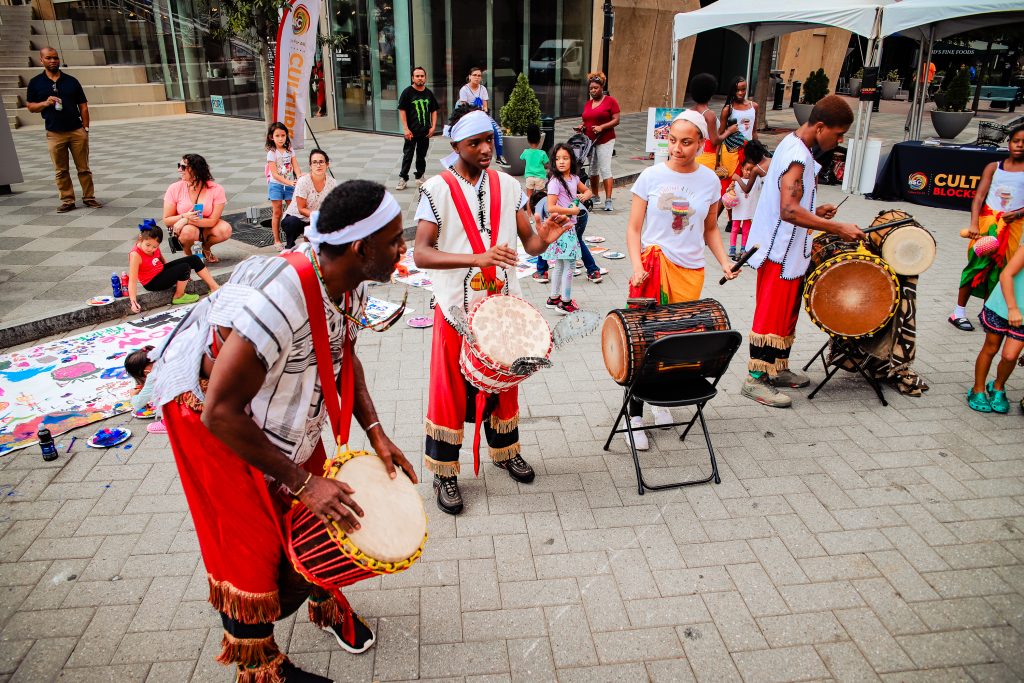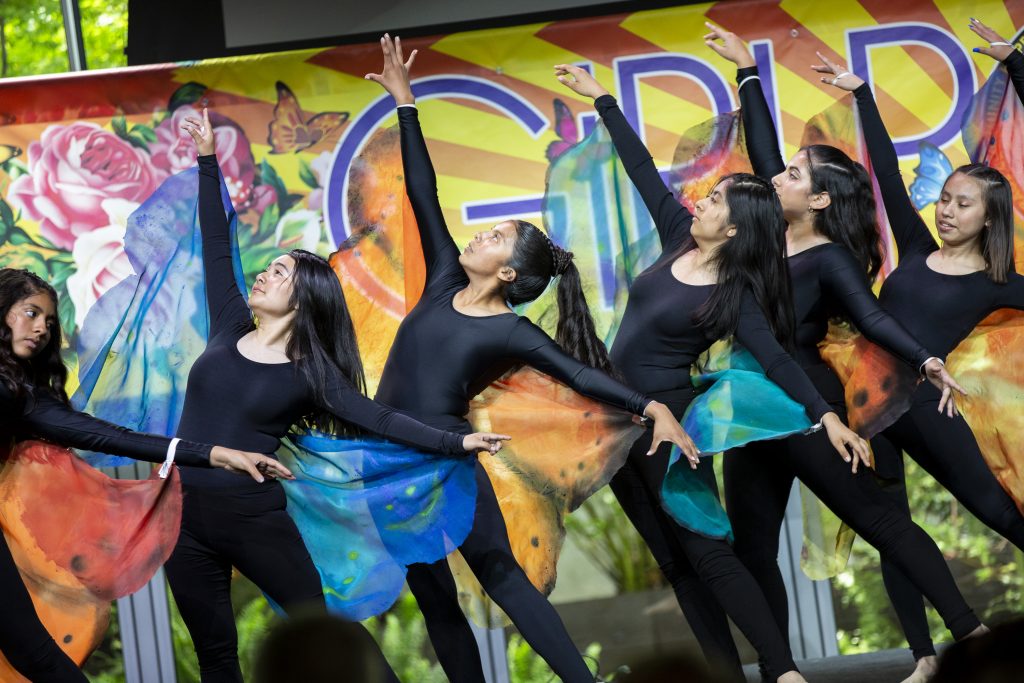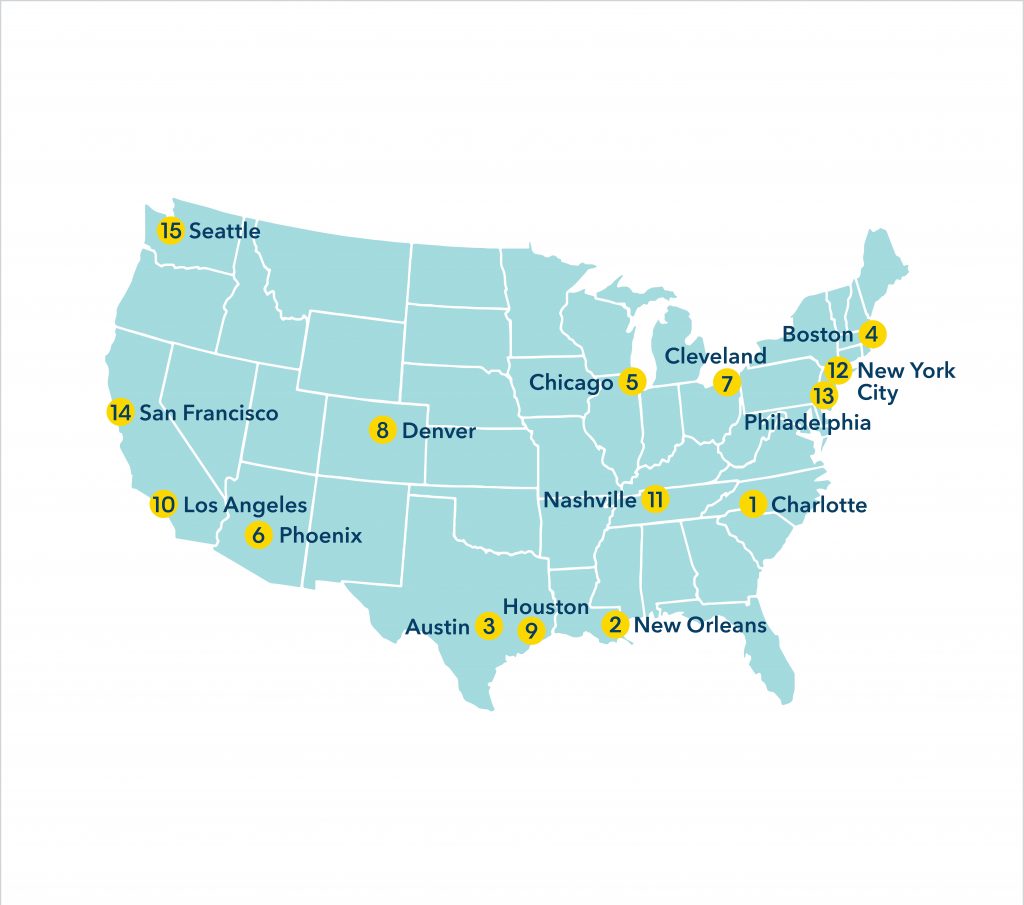
As cities increasingly use data to help shape policy and identify service gaps, what does this mean for arts and culture? There is often skepticism from both the creative sector and government on if metrics can capture the impact of the arts. Yet the desire for reliable data will only increase in the coming years as municipalities with limited resources face critical planning decisions in their efforts to recover from the pandemic and establish more equitable and inclusive practices.
As part of Bloomberg Associates’ ongoing work with cities across the United States, our Culture team noticed a lack of information being shared by cities about their arts data collection and embarked on extensive sector research, including an analysis of data practices of 15 local arts agencies across the country.
We compiled this analysis in Arts Data in the Public Sector: Strategies for Local Arts Agencies, a new resource for cities that shares best practices for leveraging arts data and identifies areas of ongoing complexity and opportunity.
We spoke to David Andersson from Bloomberg Associates’ Culture team about how cities can effectively make use of the arts data available to them.
1) Why is it beneficial for cities to collect and use arts data?
Arts data can be a powerful tool to advocate for investment in culture alongside other city services. In conversations with 15 cities across the United States, several primary benefits rose to the top.
First, arts data allows cities to gain (and share) a deep understanding of the characteristics of their local creative sectors across neighborhoods and over time, allowing them to be more responsive to the changing needs of the field. Second, data is also essential to assess who is and isn’t being served by government arts funding, giving cities the tools to improve equitable access to arts activities across communities. Finally, identifying the most actionable datasets can help accelerate a city’s understanding of timely issues and its ability to garner more resources, in addition to ensuring compliance with all regulatory functions for public funding.
Arts data is proving to be increasingly valuable in times of crisis to swiftly support artists and organizations in need. Most recently, we have seen local arts agencies leverage data to provide strategic emergency relief in various forms during the COVID-19 pandemic.

2) What kind of impact can data have on cities’ arts and cultural programs and services?
Through our research we found that some local agencies have already made data work for them in valuable ways – from helping award money to underinvested neighborhoods to guiding the creation of new programs.
For example, in Charlotte, NC, the Arts & Science Council analyzed data on cultural transactions (for example, ticket purchases) alongside household income data to determine low-income geographic areas with especially low cultural engagement. In response, the agency launched a new Culture Blocks program that fostered programming in those neighborhoods. The County agreed to a pilot program of $300,000 in five neighborhoods in 2016, which has since grown to $950,000 in ten neighborhoods in 2020.
In San Francisco, CA, the Arts Commission compared the demographics of grantee artists with city census figures, and subsequently hired community ambassadors to do targeted outreach and offer technical support for underrepresented groups. In the 2019 grant cycle, the percentage of Latinx grantees increased from 4% to 14% (nearing closer to the 15% city census figure).
3) What did your research show about the most common challenges agencies face with data?
While no two agencies have identical practices or challenges, the single biggest concern across cities is around developing metrics that are both meaningful and actionable in the context of local government.
Although certain aspects of cultural activities may be easy to tally up (such as the number of events or participants), the wide variety of creative engagement and expression doesn’t lend itself to apples-to-apples comparisons. For example, saying that one activity served 10 people while another served 1,000 implies that the latter activity was 100x more impactful than the former. However, if the first activity was a semester-long dance intensive, and the second activity was a single-day festival, value and impact are exceptionally hard to compare.
Representing arts impacts as numbers risks losing the essential value of creative work. But there may be a greater risk of having the cultural field excluded altogether from civic policymaking in the absence of meaningful metrics. In general, our research showed that it’s worth it for arts agencies to find the most effective, low-cost strategies for extracting value from data, to assess and improve their practices and to make a strong case for the impact of the arts alongside other city services.

4) It’s clear that data collection is critical yet complex. How can local arts agencies collect useful data without overburdening arts organizations?
Meaningful data can make all the difference in painting a full picture of how art can impact communities, but often the time artists and organizations spend on tracking and reporting metrics for compliance requirements seems completely unrelated to the ways they work and the services they provide the public. By making small adjustments throughout the process, data collection can be simplified and streamlined for both agencies and organizations.
For example, an agency may be looking to understand the demographics breakdown of their audience, but that may prove impractical if not all arts organizations are able to provide comprehensive and accurate figures. In this case, requesting alternative data — such as audience zip codes — may be less nuanced but still relevant and much easier to collect.
Ensuring the right questions are being asked, picking user-friendly formats that encourage standardized responses, and providing clear directions and any necessary training are all essential to receiving meaningful data. It’s important to keep in mind, too, that some information may not be necessary as part of a funding application and can be solicited as part of a later reporting process for grantees, without unduly burdening applicants that may never benefit from public funding.
5) Why now? Is there an increased urgency around this topic?
With the recent influx of American Rescue Plan (ARP) funds in city budgets, municipal leaders are currently dispersing those dollars to rebuild their economies, and the arts should be considered for investment alongside other civic priorities. The National Endowment for the Arts’ recent allocation of $20 million in ARP grants to 66 local arts agencies around the country underscores these important local entities as drivers of social wellbeing in their communities.
In the longer term, arts agencies are responding to the evolving conversations about establishing more equitable and inclusive practices. Capturing geographic and demographic data can reveal successes and gaps in funding processes and other issues that would benefit from deeper analysis and, in many cases, changes in policy.
Developing an approach that includes meaningful data can help local arts agencies ensure that all communities benefit from the creative sector, and affirm its importance as a public service well into the future.
Download the Arts Data in the Public Sector: Strategies for Local Arts Agencies guide here.